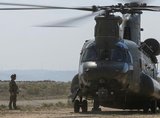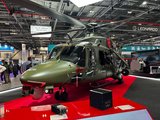Eurofighter Typhoon sales: what a difference a decade makes
The 2010s saw a number of export contracts for Typhoons placed by Middle Eastern air forces. (Photo: BAE Systems)
Although the Typhoon is regarded as an excellent aircraft, it suffers from several shortcomings. Its four partner nations had differing perspectives and enthusiasm for investment from the outset, and from an export viewpoint, this complicates government-to-government and commercial negotiations.
The upgrade path has been erratic, particularly compared to France’s Rafale, and the aircraft is complex and expensive to operate (published Austrian figures of around €77,000 per hour did not help). But seen as an export proposition, a summation of these and some wider issues seems to suggest it has lost its market niche.
Why have there been no recent export
Already have an account? Log in
Want to keep reading this article?
More from DSEI 2023 | View all news
-
![Orbiting the Future: How New Satellite Technologies are Revolutionising Global Communications]()
Orbiting the Future: How New Satellite Technologies are Revolutionising Global Communications
With the satellite industry at a pivotal juncture, Intelsat is investing in advanced technologies like 5G and optical communications, striving to enhance worldwide connectivity and address emerging governmental needs.
-
![CH-47 Chinook: why the timeless helicopter design is still a heavy-lift contender on the modern battlefield]()
CH-47 Chinook: why the timeless helicopter design is still a heavy-lift contender on the modern battlefield
From its emergence as a ground-breaking design in the 1950s to its widespread deployment in diverse operations worldwide, the Chinook continues to leave an indelible mark on the aviation landscape. Shephard sums up the latest developments and tells you everything you need to know about the workhorse of many armies and air forces in the 2020s.
-
DSEI 2023: Controp unveils Smart Vision AI software for EO/IR payloads
Controp Precision Technologies unveiled its Smart Vision AI software for enhancing the level of autonomy and automation for a variety of surveillance and reconnaissance missions at DSEI 2023.
-
![Babcock and Cosworth to test hybrid propulsion in militarised Land Cruiser 70]()
Babcock and Cosworth to test hybrid propulsion in militarised Land Cruiser 70
Babcock has signed an MoU with propulsion experts Cosworth to investigate the use of hybrid power systems in military vehicles and will begin with integrating a Catalytic Generator (Cat Gen) into a 70 Series Toyota Land Cruiser.
-
![DSEI 2023 in review: Ukraine, AI and the real world]()
DSEI 2023 in review: Ukraine, AI and the real world
DSEI 2023 took place in the shadow of the largest European land war in more than seven decades and a growth in conversations about artificial intelligence (AI) with limited UK immediate defence programme opportunities; many of the new products and exhibitors' announcements reflected this.
-
![DSEI 2023: SpearUAV rolls out drone launcher system for submarines]()
DSEI 2023: SpearUAV rolls out drone launcher system for submarines
Israeli UAS developer SpearUAV introduced a submarine-launched capsule option for its Viper 750 UAV at DSEI 2023.
























